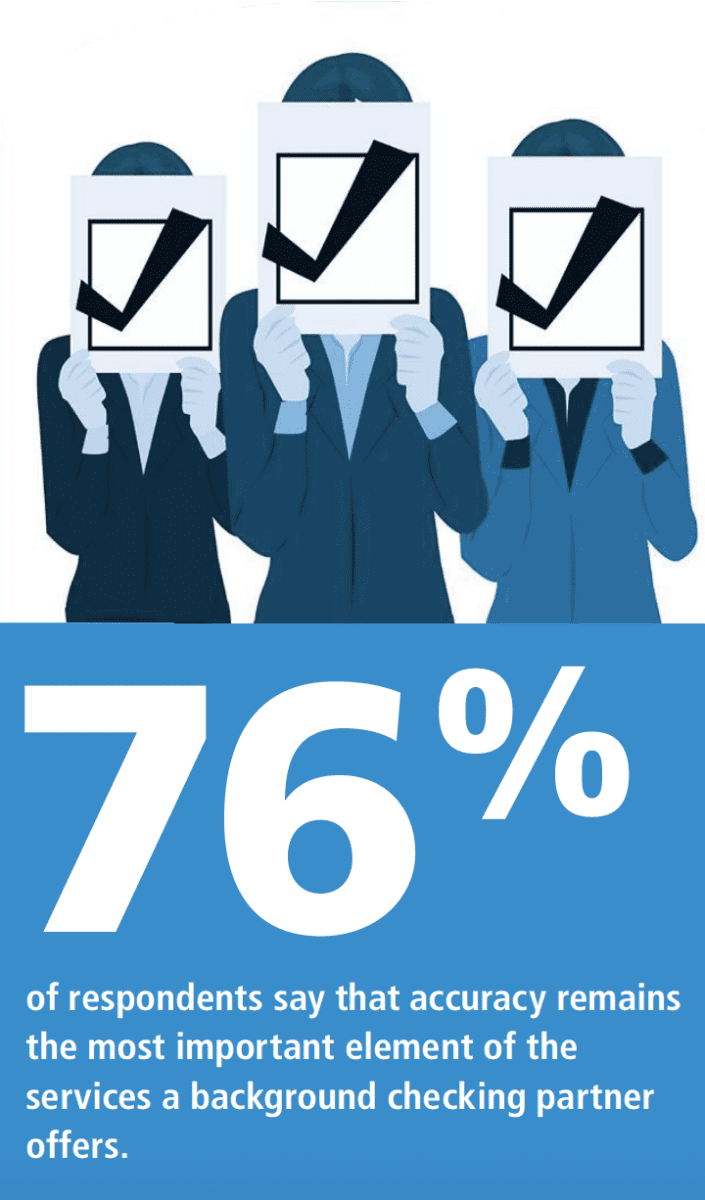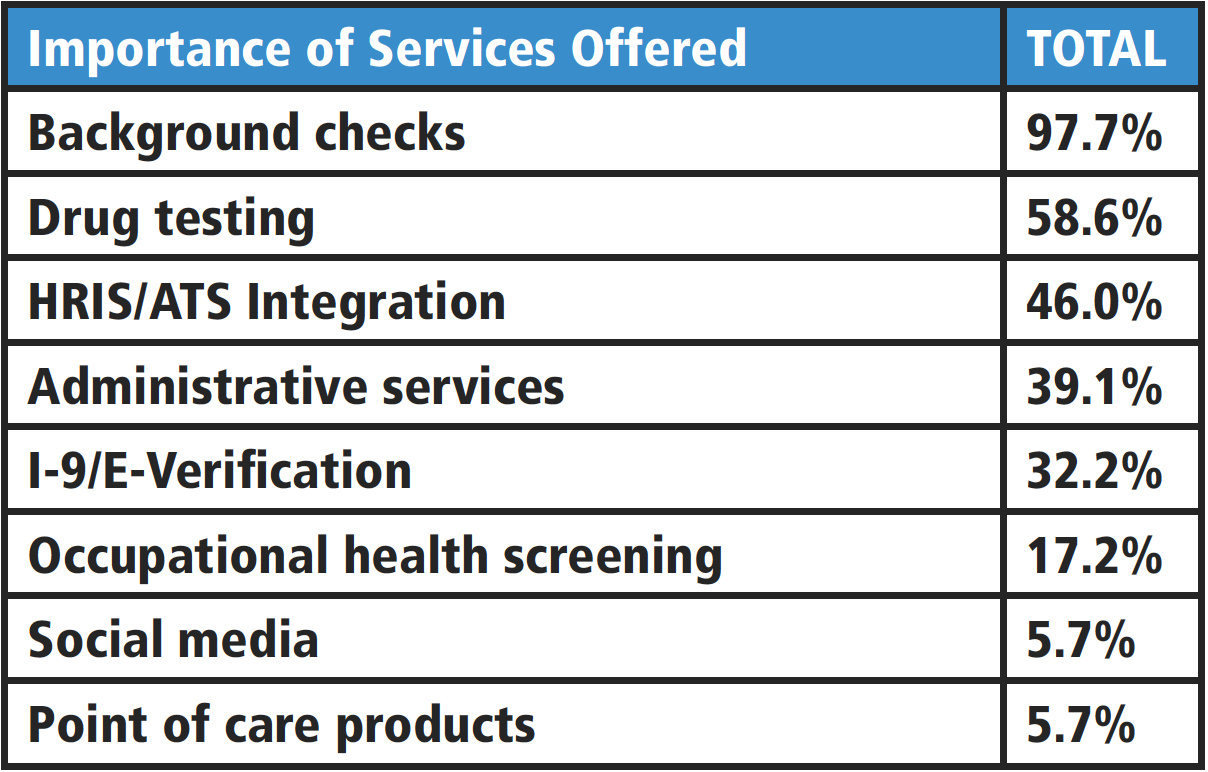Background screening remains a critical step in the hiring process.
By Larry Basinait
Today, improving candidate experience is a major driving force in the hiring process -and a solid background screening approach is a critical step to ensuring that job seekers are satisfied. Candidates are looking for a process that is transparent and offers real-time updates on a mobile platform. While new research from HRO Today finds that 75 percent of job seekers ranked overall performance as “good” or “excellent,” there is room for background screening partners to improve the perception of how well they deliver their services. Where can improvements be made?
HR leaders are looking for background screening partners to consistently meet very tight turnaround times while delivering reports that are both accurate and complete. Today’s reports should be able to be customized to organizational needs and delivered with up-to-date, real-time data.
 In fact, 76 percent of respondents say that accuracy remains the most important element of the services a background checking partner offers. If a background report isn’t correct, then the second most important service element -speed -becomes irrelevant. In terms of timing, 92 percent of HR leaders expect the results of a background check in four days or less, with nearly 44 percent expecting them in one to two days. The average acceptable turnaround time is a brief 2.8 days.
In fact, 76 percent of respondents say that accuracy remains the most important element of the services a background checking partner offers. If a background report isn’t correct, then the second most important service element -speed -becomes irrelevant. In terms of timing, 92 percent of HR leaders expect the results of a background check in four days or less, with nearly 44 percent expecting them in one to two days. The average acceptable turnaround time is a brief 2.8 days.
As for technology, 74 percent of respondents are seeking real-time updates. In a very tight job market, it’s crucial to know exactly where a candidate stands so that they and the hiring manager can be kept informed in a timely manner. Recruiters want to be able to communicate the status of a background check to eager hiring managers and candidates, as well as make contingency plans if a problem arises. Offering a mobile candidate portal can facilitate updates and keep the channels of communication open.
In addition, data protection and security with personally identifiable information (PII) was selected by 71 percent as an important system capability. Candidates provide a great deal of personal information when completing a background check, and both potential employers and background checking partners have a responsibility to protect that data. Examples of PII include social security numbers, birthdates, passport numbers, driver’s license numbers, and credit card numbers, among other things. Unfortunately, massive data breaches are all too common, and they happen to companies that would seem to have secure data structures like Target, TD Bank, and Equifax. An identity thief may purchase and use the information. Identity thieves often use PII to try to apply for loans in someone’s name or withdraw money from their accounts. A social security number may be used to work illegally or enter the country illegally, finds Infomania.
The research also reports the most important services for HR leaders. Background screening parters offer an ever-increasing array of services to meet the diverse needs of organizations. In the annual HRO Today Baker’s Dozen ranking for background screening, HRO Today tracks 17 different services currently being offered.
 A background check is by far the most important service offered, selected by 98 percent of respondents. What’s included in a background check varies depending on what is requested, but typically, an employment background check shows employment verification, identity verification, credit history, criminal records, and education confirmation, along with other areas.
A background check is by far the most important service offered, selected by 98 percent of respondents. What’s included in a background check varies depending on what is requested, but typically, an employment background check shows employment verification, identity verification, credit history, criminal records, and education confirmation, along with other areas.
Fifty-eight percent of respondents say that drug testing is important, but its level of importance varies widely by the type of position. According to the United States Department of Justice, drug abuse costs U.S. business owners more than $140 billion dollars every year, including turnover from employees who abuse drugs. Kress Inc. reports that when employers screen employees for drug use, several serious risks are mitigated, including accidents, theft, employee turnover, absenteeism, poor productivity, liability, and increased benefits costs.














